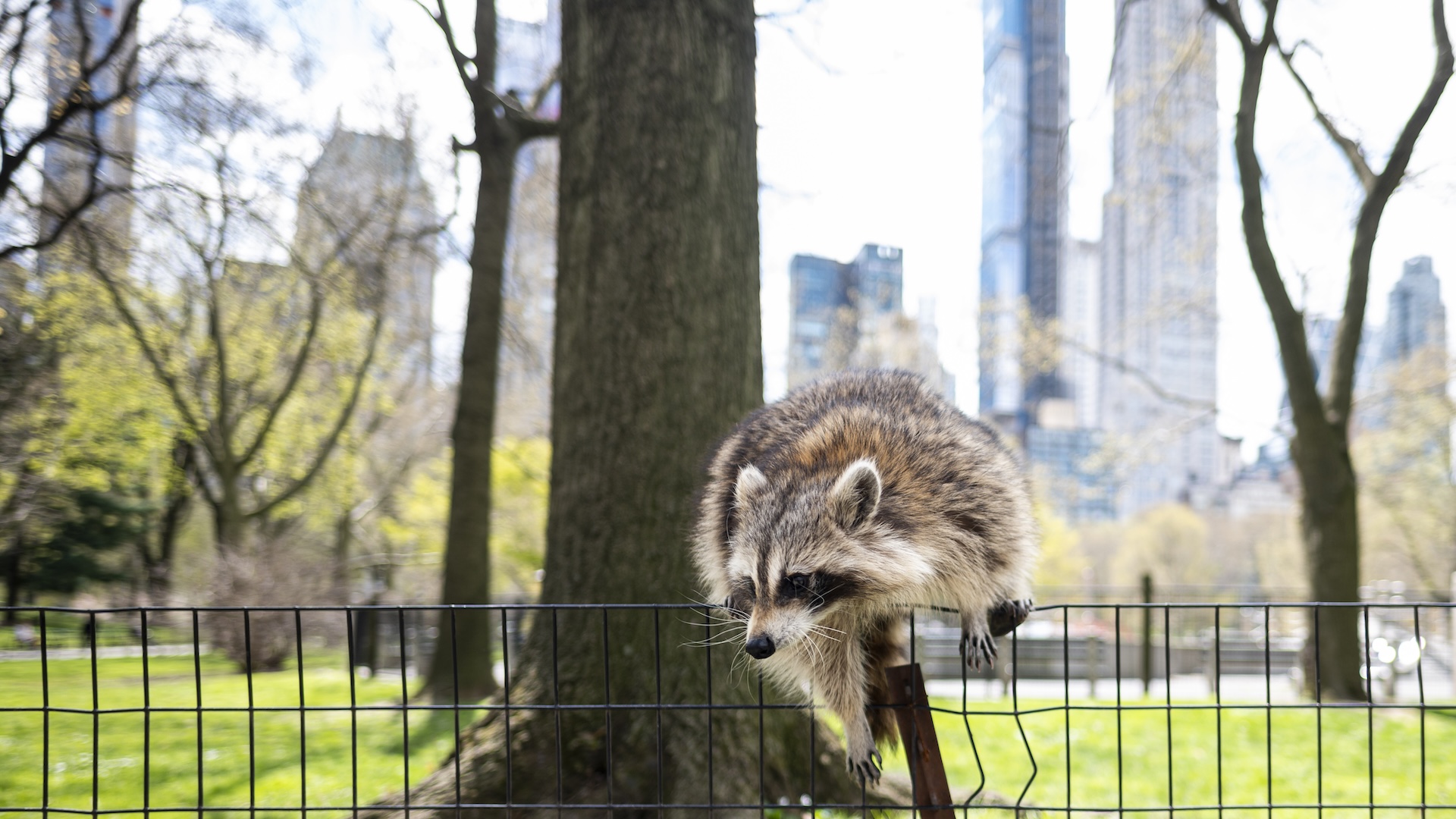Human trash is 'kick-starting' the domestication of city-dwelling raccoons, study suggests
Raccoons that live near humans had shorter snouts than rural raccoons, a trait that tends to arise in the early stages of domestication.

City-dwelling raccoons are showing early signs of domestication, a new study finds.
Using photos uploaded to the citizen science platform iNaturalist, researchers found that raccoons in urban environments had shorter snouts than their rural counterparts. The difference could be one of several traits that make up "domestication syndrome," the scientists wrote in a study published Oct. 2 in the journal Frontiers in Zoology.
Domesticated animals typically become less aggressive toward humans over time. They gradually develop a relationship in which people provide for them in exchange for resources, such as meat and milk from livestock or labor from herding dogs. That process often involves selectively breeding animals for certain desirable traits, but it doesn't always begin that way.
"I wanted to know if living in a city environment would kickstart domestication processes in animals that are currently not domesticated," study co-author Raffaela Lesch, a zoologist at the University of Arkansas Little Rock, said in a statement. "Would raccoons be on the pathway to domestication just by hanging out in close proximity to humans?"
Domestication begins when animals adapt to a new niche created by the presence of humans. For raccoons, that niche might involve rooting around in our trash bins.
"Trash is really the kickstarter," Lesch said. That waste makes for an easy meal for the critters. "All they have to do is endure our presence, not be aggressive, and then they can feast on anything we throw away."
In the new study, Lesch and a team of 16 students looked for early signs of domestication in raccoons in the United States. Physical signs that a species is becoming domesticated often include shorter snouts, floppy ears, white spots and a reduced fear response — a series of traits collectively called "domestication syndrome."
Get the world’s most fascinating discoveries delivered straight to your inbox.
Drawing from nearly 20,000 photos uploaded to iNaturalist, the team found that the snouts of raccoons living in densely populated areas were about 3.5% shorter than those of raccoons in more rural counties.
These seemingly unrelated "domestication syndrome" traits tend to arise early in domestication and may be linked thanks to mutations that occur during an animal's development. In 2014, scientists proposed that mutations in neural crest cells, a type of stem cell that forms in vertebrate embryos, could cause these changes.
The new findings seem to support that hypothesis, the researchers wrote in the study. A reduced fear response helps animals like raccoons take advantage of human environments, so natural selection might make that bravery more common in urban environments. Changes in snout length early in domestication could suggest that the two traits are linked, the team said.
Future studies will investigate whether the same pattern holds for other urban mammals, such as opossums, according to the statement.
"This will help inform us if human presence is enough to already start the process of domestication in a species," Lesch said.

Skyler Ware is a freelance science journalist covering chemistry, biology, paleontology and Earth science. She was a 2023 AAAS Mass Media Science and Engineering Fellow at Science News. Her work has also appeared in Science News Explores, ZME Science and Chembites, among others. Skyler has a Ph.D. in chemistry from Caltech.
You must confirm your public display name before commenting
Please logout and then login again, you will then be prompted to enter your display name.
